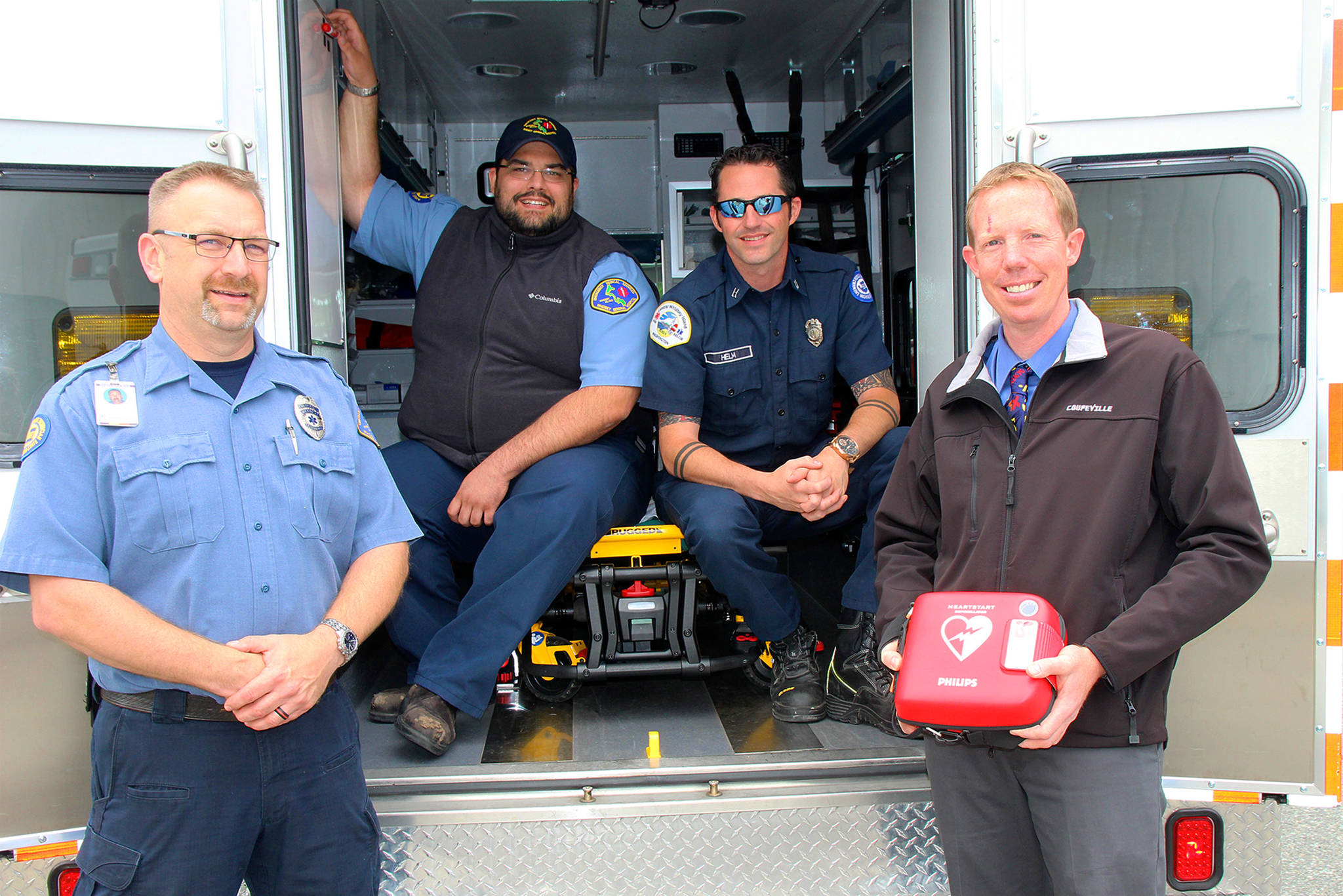An Eagle Scout project from nine years ago was one of many factors that converged last month to save a woman’s life in Coupeville.
In fact, a whole string of people representing different parts of the Central Whidbey community came together and used a simple procedure and an automated heart-shocking device to respond to the woman’s cardiac emergency.
First responders say the event is a perfect example of the reason more people should learn CPR and why it’s so important to have automated external defibrillators, or AEDs, available in public places.
“We see it as a force multiplier for us that allows our fire department to have a greater reach,” said Capt. Jerry Helm with Central Whidbey Fire & Rescue.
The AED used to save the woman’s life has been at Coupeville Elementary School since 2008, when Boy Scout Chris Bitting raised money and purchased three of the devices for the district to fulfill an Eagle Scout requirement, according to fourth-grade teacher Jon Gabelein.
The incident occurred as parents were dropping off their children in the morning at Coupeville Elementary School.
Kerry Western, a Freeland resident, was walking with her daughter when she saw another parent fall to the ground. Her first thought was that the woman tripped, but she quickly realized something much more serious was going on.
The woman started having a seizure. When it stopped, the woman was unresponsive and didn’t have a pulse.
Western had gone through CPR training with Central Whidbey Fire & Rescue because she was a T-ball and baseball coach. She said it was a very scary situation to be in, but she “just knew what needed to be done” and performed CPR on the woman right on the sidewalk.
One person at the scene called 911 and another retrieved Gabelein from his classroom. Gabelein happens to be a lieutenant with South Whidbey Fire/EMT who teaches CPR and first aid.
Gabelein rushed to the scene and took over CPR. Performing chest compressions becomes less effective when a person is tired, he explained, and the person doing it should be switched out every two minutes, if possible.
Two firefighters from Central Whidbey Fire & Rescue also happened to be dropping off children that morning and worked to save the woman, according to Helm.
A teacher ran into the school and retrieved the AED that had been unused for nine years. The firefighters attached the small machine to the woman.
The woman’s heart was in ventricular fibrillation, which is essentially an inefficient and uncontrolled rhythm, Gabelein explained.
The AED’s job, he said, is to “knock some sense” into the heart with an electrical shock that stops the heart for a moment and restore the normal rhythm.
The AED is extremely user-friendly. It analyzes the patient’s vitals and decides whether a shock is needed. If so, the patient is shocked.
In this case, the AED delivered the shock. Her heart’s rhythm was restored and her color returned, Gabelein said.
Not long afterward, members of a WhidbeyHealth ambulance crew were on scene and took over. The woman was transported to the hospital with a heart beating a healthy rhythm.
When it comes to cardiac emergencies, survival is all about time, firefighters, EMTs and paramedics agree. Survival rates, for example, diminish by as much as 10 percent for every minute a person in crisis goes without CPR, Helm said.
Gabelein explained that the heart tends to “forget” how to beat normally over time.
“With a cardiac event like this, every minute is vital,” Gabelein said.
While the hospital is kitty-corner from the elementary school, the ambulance crew simply couldn’t respond as quickly as people at the scene who have an AED at hand.
“You don’t want to play the waiting game,” Gabelein said. “You want to shock that heart as soon as possible.”



